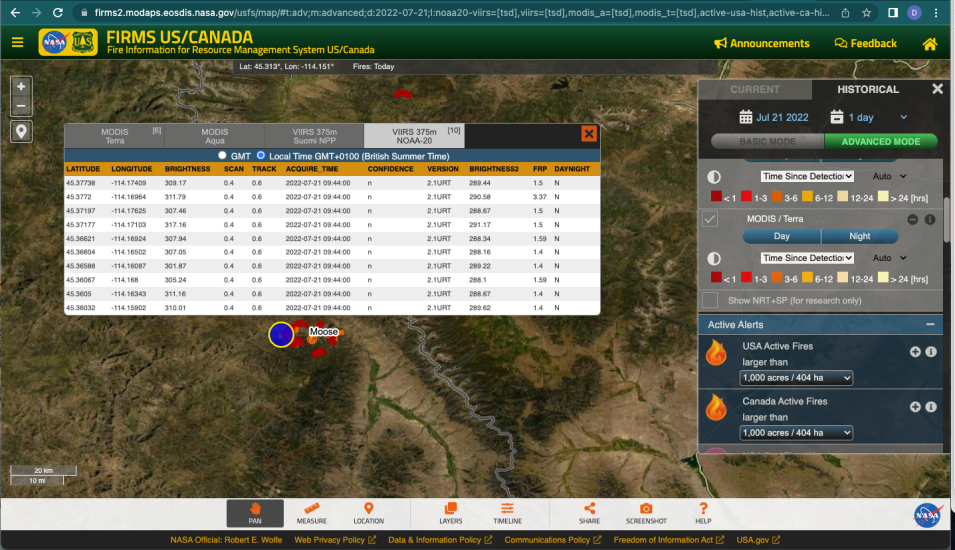When it comes to monitoring and fighting wildfires, accurate and timely data about a fire’s location, extent, intensity, and impact are critical. That’s why NASA funded the Fire Information for Resource Management System (FIRMS) in 2007 and, more recently, partnered with the U.S. Forest Service to develop FIRMS US/Canada, a new instance of FIRMS that optimizes the Forest Service's distribution of active fire information by leveraging LANCE's web-based active fire mapping tools and capabilities for disseminating data, products, and services.
Now, FIRMS has announced the release of ultra real-time (URT) data, which provide active fire data in seconds and make FIRMS’s value to the wildland fire community even greater.
“[This] is the first routine service for detecting wildfires over the continental United States from NASA and NOAA low-Earth orbit satellites with a latency of less than 60 seconds from Earth observation to wildfire detection,” said Liam Gumley, a scientist with the Cooperative Institute for Meteorological Satellite Studies at the University of Wisconsin-Madison’s Space Science and Engineering Center (SSEC).
URT data are made possible by an SSEC-developed system that receives, decodes, and processes data from the Moderate Resolution Imaging Spectroradiometer (MODIS) aboard NASA’s Terra and Aqua satellites and the Visible Infrared Imaging Radiometer Suite (VIIRS) instrument aboard the joint NASA/NOAA Suomi National Polar-orbiting Partnership and NOAA-20 satellites to produce active fire data for the continental United States (CONUS) within 60 seconds using direct broadcast.
The system capitalizes on SSEC’s access to direct broadcast antennas throughout the continental United States, as well as Puerto Rico and Hawaii. Software systems enable the SSEC to stream the direct broadcast data in real-time from each antenna to a central collection point at the University of Wisconsin–Madison, which then ingests, merges, and de-duplicates the data in real-time. The software is set up to process micro-granules from Level 0 through Level 1 to active fire Level 2 products using the same version of the thermal anomalies/fire code (i.e., the contextual fire algorithm code) that LANCE uses. The active fire data are then converted to Comma Separated Values (CSV) format and provided to FIRMS via a web-based application programming interface (API). The result is MODIS wildfire detections with a latency of approximately 25 seconds and VIIRS wildfire detections with a latency of approximately 50 seconds (relative to time of observation on the spacecraft).
